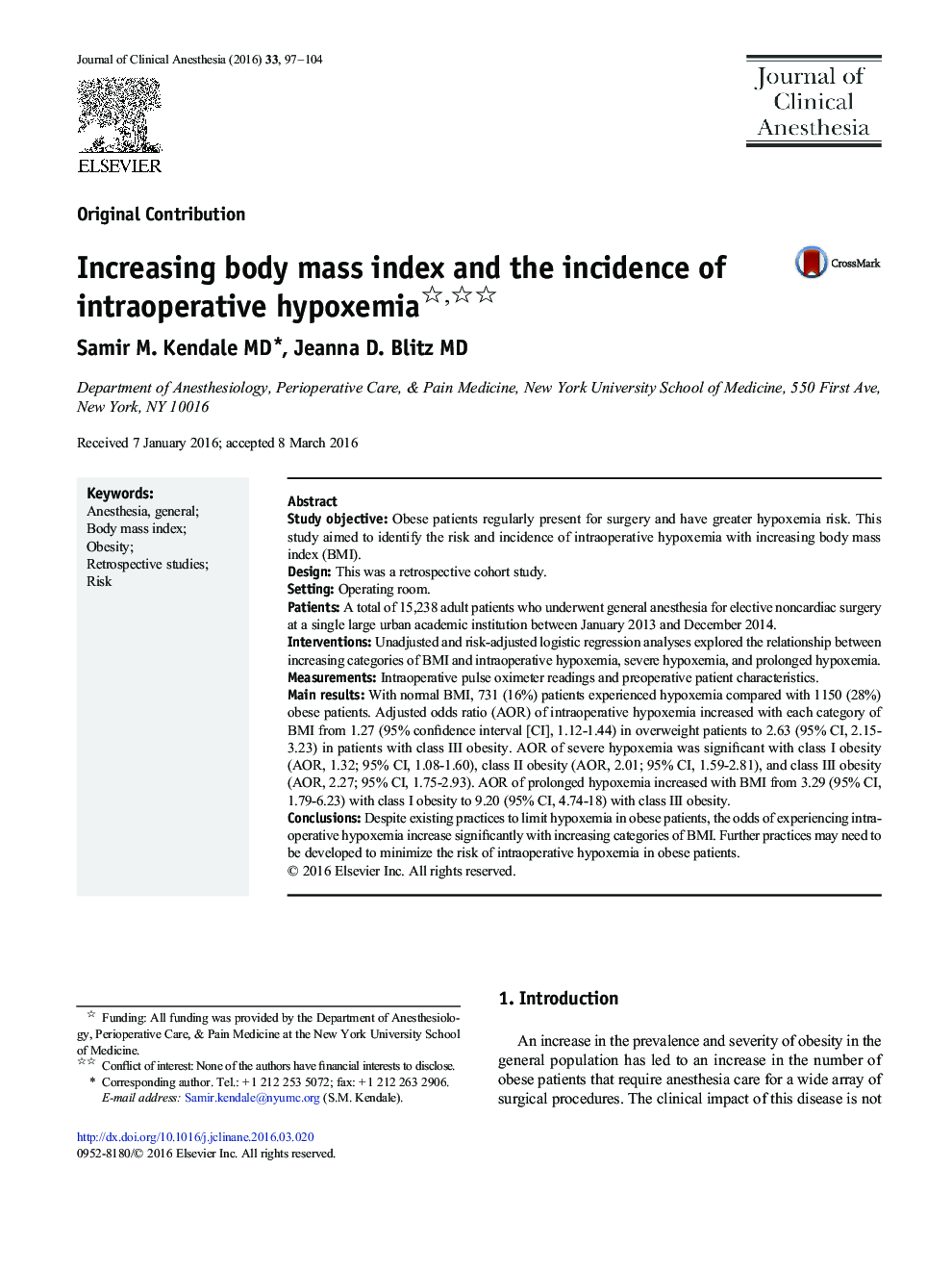| Article ID | Journal | Published Year | Pages | File Type |
|---|---|---|---|---|
| 2762100 | Journal of Clinical Anesthesia | 2016 | 8 Pages |
•The rate at which intraoperative hypoxemia occurs in the obese is unknown.•Odds of intraoperative hypoxemia increase with body mass index.•Odds of severe intraoperative hypoxemia increase with body mass index.•Odds of prolonged intraoperative hypoxemia increase with body mass index.•Current measures to minimize hypoxemia in the obese population may be inadequate.
Study objectiveObese patients regularly present for surgery and have greater hypoxemia risk. This study aimed to identify the risk and incidence of intraoperative hypoxemia with increasing body mass index (BMI).DesignThis was a retrospective cohort study.SettingOperating room.PatientsA total of 15,238 adult patients who underwent general anesthesia for elective noncardiac surgery at a single large urban academic institution between January 2013 and December 2014.InterventionsUnadjusted and risk-adjusted logistic regression analyses explored the relationship between increasing categories of BMI and intraoperative hypoxemia, severe hypoxemia, and prolonged hypoxemia.MeasurementsIntraoperative pulse oximeter readings and preoperative patient characteristics.Main resultsWith normal BMI, 731 (16%) patients experienced hypoxemia compared with 1150 (28%) obese patients. Adjusted odds ratio (AOR) of intraoperative hypoxemia increased with each category of BMI from 1.27 (95% confidence interval [CI], 1.12-1.44) in overweight patients to 2.63 (95% CI, 2.15-3.23) in patients with class III obesity. AOR of severe hypoxemia was significant with class I obesity (AOR, 1.32; 95% CI, 1.08-1.60), class II obesity (AOR, 2.01; 95% CI, 1.59-2.81), and class III obesity (AOR, 2.27; 95% CI, 1.75-2.93). AOR of prolonged hypoxemia increased with BMI from 3.29 (95% CI, 1.79-6.23) with class I obesity to 9.20 (95% CI, 4.74-18) with class III obesity.ConclusionsDespite existing practices to limit hypoxemia in obese patients, the odds of experiencing intraoperative hypoxemia increase significantly with increasing categories of BMI. Further practices may need to be developed to minimize the risk of intraoperative hypoxemia in obese patients.
